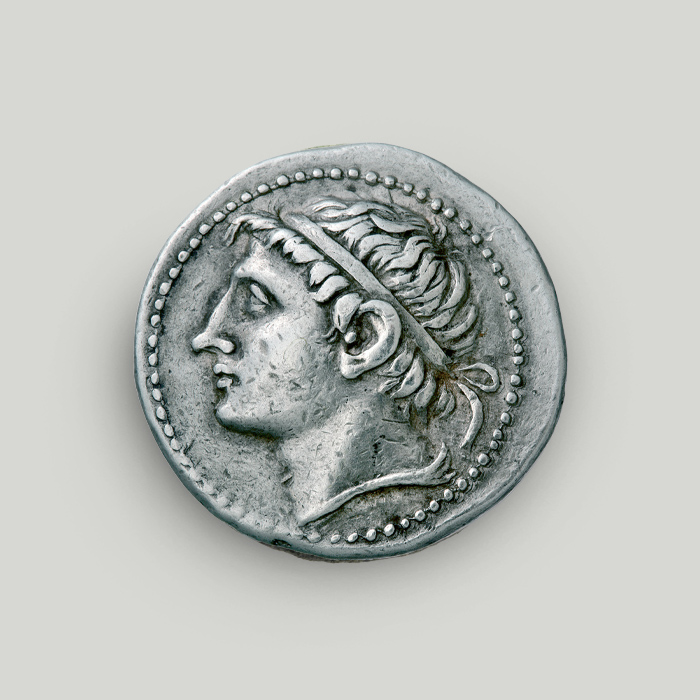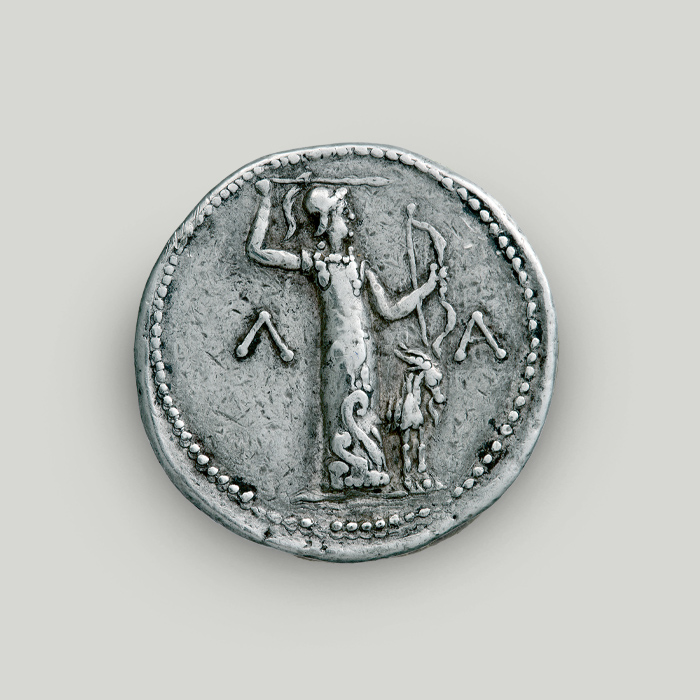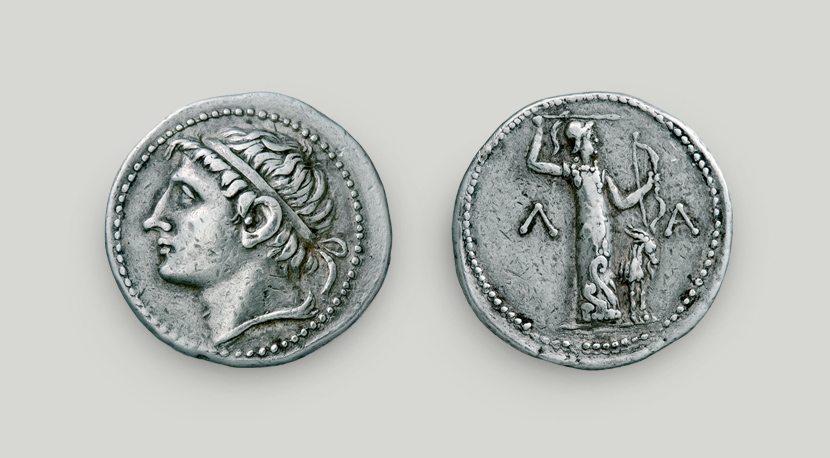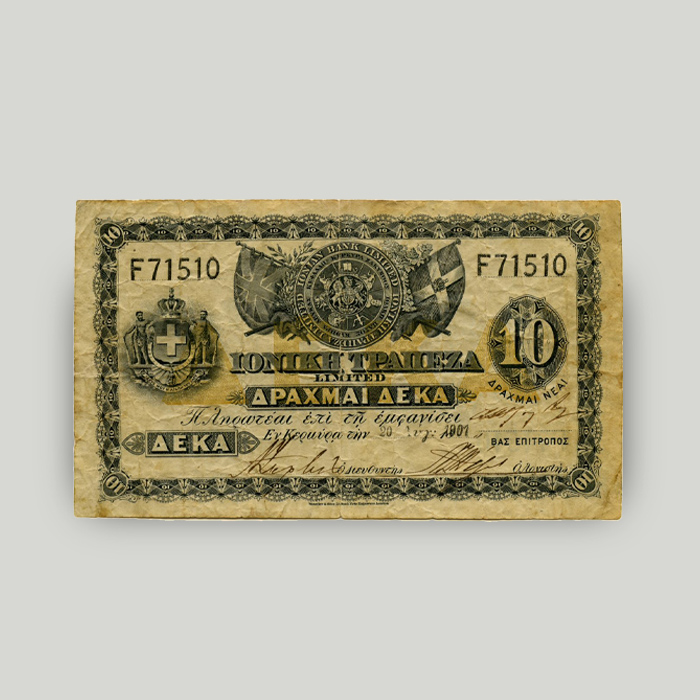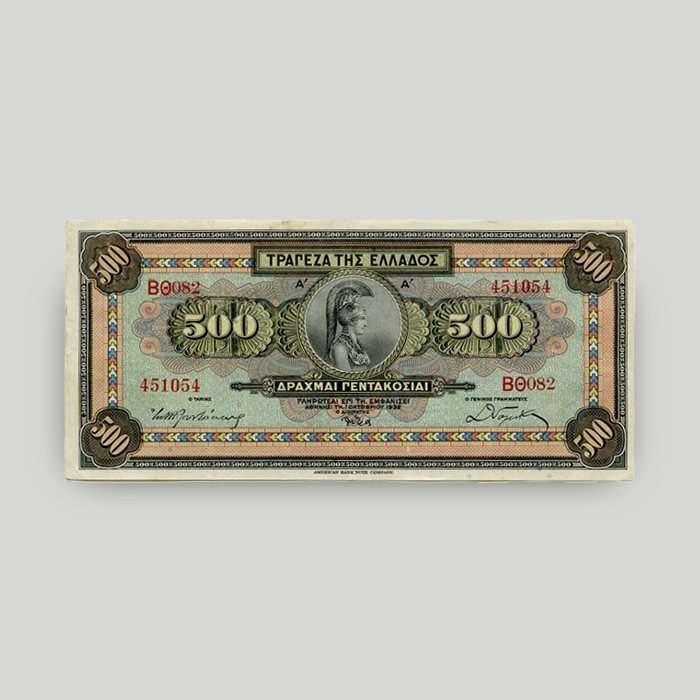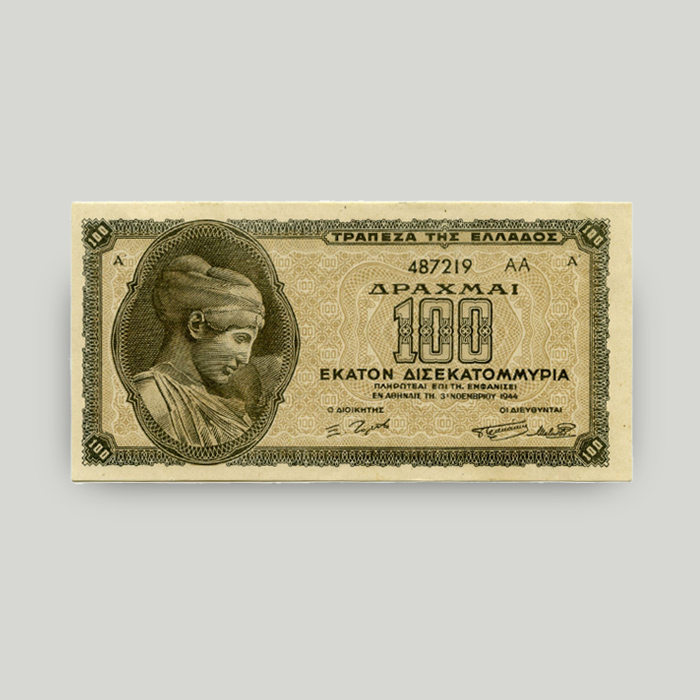Silver tetradrachm of Cleomenes III
Cleomenes III was king of Sparta and the most important political figure of the 3rd century BCE. He issued silver tetradrachms that are extremely rare today. Cleomenes’ coinage is our only source on the cult statue of Apollo Amyklaios, which has not survived to the present day. The tetradrachm in the Collection of Alpha Bank is the only one out of 10 surviving pieces that is still in Greece.
Obverse
Head of Cleomenes III in profile facing left, wearing a diadem (decorative head band tied with a knot behind the head), within a circular dotted border.
Reverse
Statue of Artemis Orthia or Apollo Amyklaios facing right, holding a bow in the right hand and a spear overhead in the left. The lower part of the tunic is decorated with a leaf motif, on which a sphinx is seated facing right. A goat facing right is depicted behind the effigy of the divinity. The entire type is enclosed in a circular dotted border. The Greek letters Λ and Α are struck to the left and right of the effigy, respectively.
The works and days of Cleomenes III
King Cleomenes III ascended the throne of Sparta in 235 BCE. He was the most important political figure of the 3rd century BCE.
He earned his place in history due to the radical changes he implemented at political, financial and social level, which caused concern among the other great powers of the time as he:
- Reformed the Spartan state.
- Redistributed the land.
- Organised the army.
- Reinstated ancient traditions in public life.
The Cleomenean War
The Cleomenean War started when the Achaean League under Aratus of Sicyon formed an alliance with the kingdom of Macedon and attacked Cleomenes. Cleomenes then sought to forge an alliance with Ptolemy III Euergetes, king of Egypt. In return, Ptolemy asked Cleomenes to send his mother Cratesiclea and his children to Egypt as hostages.
With his mother’s encouragement, Cleomenes agreed to send his family to Alexandria as collateral.
The Cleomenean War ended with the Battle of Sellasia in 221 BCE. During the battle, the Spartan army suffered a catastrophic defeat by the Achaeans and the Macedonians. Only 200 out of 10,000 soldiers survived.
Cleomenes’ flight to Egypt
In an effort to secure Ptolemy’s support, Cleomenes fled to Egypt. Unfortunately, Ptolemy III died. His successor Ptolemy IV put Cleomenes under house arrest.
After a failed coup in 219 BCE, Cleomenes committed suicide to avoid capture. After his death, his mother and children, who had been kept hostage in Egypt for years, were also executed.
The tetradrachms of Cleomenes
The tetradrachms of Cleomenes were minted during the Cleomenean War. They were intended to cover any needs arising from the war.
The silver tetradrachms of Cleomenes III are extremely rare. Currently, only about 10 of them are known to have survived. The tetradrachm in the Alpha Bank Numismatic Collection may be the only one in Greece.
The debate on the type of the reverse
Sometimes, coins depict ancient works of art that have not survived to the present day and that we only know of thanks to their descriptions by traveller and geographer Pausanias.
There has been much debate about the figure on the reverse of the silver tetradrachm of Cleomenes. It is beyond doubt an archaic statue.
Some believe it is the bronze cult statue of Apollo Amyklaios, one of the most important deities worshipped in Sparta. It was created sometime during the 7th or early 6th century BCE and erected on a pedestal that enclosed the subterranean altar of Hyacinthus. The depiction on the coin is consistent with Pausanias’ description of this statue (Hellados Periegesis 3.6).
Others claim the reverse depicts the statue of Artemis Orthia.
Coins in poetry
Constantine P. Cavafy, an important Greek poet from Alexandria, Egypt, found inspiration for his poetry in figures and incidents from the Hellenistic period. Coinage is often used to illustrate his poems.
In the poems titled “In Sparta” and “Come Now, King of the Lacedaemonians”, Cavafy tells the story of Cleomenes III of Sparta.
Fractions and etymology
As suggested by its name, the tetradrachm equalled 4 drachmas. Each drachma equalled 6 obols.
Before the invention of coins, people used iron spits of 1-1.5 meters in length for their daily transactions.
The spit was called ovelos, and 6 of them were considered a standard handful. This handful was later dubbed “drachma”, as it could be grasped (drattomai in Ancient Greek) in a person’s fist.
When coins started to circulate, the word ovelos (the previously used spit) changed to ovolos (“obol” in modern numismatics) and was used to denote the value once held by 1 spit, i.e. 1/6 of a drachma.
The coin in our publications
The silver tetradrachm of Cleomenes III is mentioned in the book Money. Tangible Symbols in Ancient Greece, edited by Dr Dimitra Tsangari, Nicholas Stampolidis and Yorgos Tassoulas. The publication accompanied an exhibition of the same title jointly organised by the Museum of Cycladic Art and the Alpha Bank Numismatic Collection. It presents a different side of coins, which first appeared in the late 7th century BCE.
Buy the publication Money. Tangible Symbols in Ancient Greece on the Alpha Bank e-shop.
The Alpha Bank Numismatic Collection is not open to the public.
Research visits to the Numismatic Collection can be organised upon request.
Contact us to book your visit.
